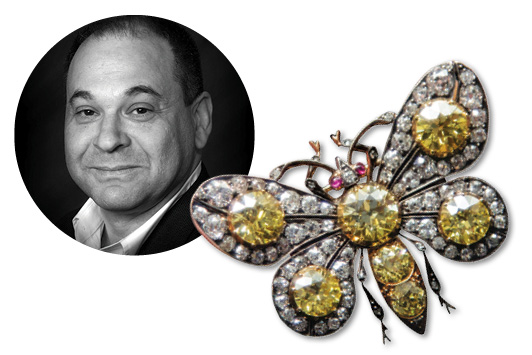 What information does an appraisal of estate or antique jewelry provide?
What information does an appraisal of estate or antique jewelry provide?
An appraisal, done correctly by an independent, accredited appraiser trained and tested in theory and appraisal practices, can assure the buying public of what they are purchasing, especially on a high-end item. The appraiser is considered an expert whose research can help provide details about the piece. The appraiser, in most cases, will be seeing the item mounted. The report is an assurance that the stone is as represented. An appraisal can point out any previous repairs and note any makers’ marks and hallmarks that will influence value.
The appraiser’s report will also determine that the metal and cut of the stone are correct for the period and style of the piece. The history and provenance of the piece are also important factors in determining the piece’s historical accuracy as well as whether it is one of a kind or something very unusual. I have had a number of times where the item is misidentified for the period and style or that an item [presented as] a period piece proved to be a reproduction. Understanding jewelry history, manufacturing and motifs is a major help, and knowing when to call in a historian and whether additional study is needed is key.
In what way does an appraisal help with the sale?
An appraisal provides a value based on prices of comparables — similar pieces offered for sale, either at auction or online — either in the report or as a separate file. Showing how the amount listed was ascertained can give the client confidence in the value assigned to a jewel.
Are there problems in removing stones from an antique or vintage setting?
A stone should only be removed if it can be done without [causing] any damage or affecting the integrity of the piece, and [if] it is where the value is, such as in a solitaire ring where the large stone is the most valuable part of the ring and should be certified. But if it’s a beautiful and intricate piece, where the stone can’t be removed without causing damage, then it shouldn’t be removed. In many fine and high-end items, especially signed pieces, there is information available about the piece that can be obtained with some research. Some of the finer jewelry houses offer this service for a fee, so the quality of the piece would have to warrant paying it.
Should a retailer offer this service to a client?
Retailers should always offer or suggest getting the appraisal done. This helps them in several ways: It removes much of their liability by having a third party research and prove their statements, and it also might find something they missed. And the client usually needs an appraisal for insurance reasons.
A report issued by an independent appraiser will also help highlight problems with the piece so they can be handled prior to the exchange and sale, so that issues such as a stone having been replaced or the need for a repair would have been spotted in the report, with a recommendation they be taken care of.
Images: Edward Lewand; Ukartpics/Alamy stock photoArticle from the Rapaport Magazine - May 2020. To subscribe click here.